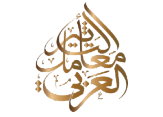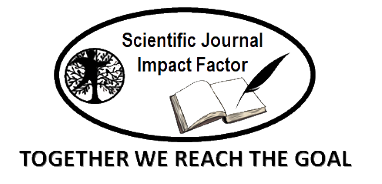دراسة وتحليل العلاقة بين الإنفاق التنموي وإيرادات القطاع غير النفطي والنمو الاقتصادي للقطاع غير النفطي في ليبيا خلال الفترة (2000-2019)
Keywords:
economic growth of the non, oil sector, developmental expenditure, non-oil revenues, ARDL modelAbstract
This study aims to analyze the relationship between developmental expenditure and non-oil revenues, between developmental expenditure and non-oil GDP, and between non-oil revenues and non-oil GDP by using a semi-annual data during the period 2000-2019. The study employs descriptive analysis of the reality of the established variables and their development during the study period. Standard analysis is also employed the ARDL (Autoregressive Distributed Lag Model) to test the relationship between these variables in the short and long term. The study concluded that developmental expenditure did not represent a large percentage of the volume of public expenditures, non-oil revenues were small, and non-oil GDP was modest during the study period. By conducting the ARDL test, the study concluded that there is non-significant, relationship directing between developmental expenditure and non-oil GDP. The results also concluded that there is a mutual positive significant long-term relationship between developmental expenditure and non-oil revenues. In addition, there is no relationship between non-oil revenues and non-oil GDP. Based on these results, the study reached a number of recommendations that would support and increase both the quantity and quality of developmental expenditure and non-oil revenues to enhance and increase the volume of economic growth in the non-oil sector.
References
1- الحامد، ميساء (2021) "أنواع النفقات العامة" http;//www.rouwwad.com
2- الوائلي،خضير عباس (2017) "استعمال أسلوب ARDL في تقدير اثر سياسات الاقتصادالكلي على بعض المتغيرات الاقتصادية في العراق"، أطروحة دكتوراة، المستودع الرقمي العراقي للرسائل الجامعية.
3- بوفنش، وسيلة(2022)"أثر الانفاق الاستثماري على النمو الاقتصادي خارج قطاع المحروقات في الجزائر"، مجلة مجاميع المعرفة مجلد8 عدد 01 (ج2).
4- حمداني، محي الدين(2009) "حدود التنمية المستدامة في الاستجابة لتحديات الحاضر والمستقبل"، جامعة الجزائر اطروحات دكتوراه في العلوم الاقتصادية.
5- حمودة، عبد الهادي (2008) "التنمية المستدامة في ليبيا" مجلة التخطيط والتنمية المجلد 2 العدد1.
6- خضر، محمد (2019) "النمو الاقتصادي http;//www.nentopedia.com موسوعة النمو الاقتصادي.
7- خورشيد، فيصل (2020) "تحليل العلاقة السببية بين الانفاق الحكومي والنمو الاقتصادي للعراق"، دراسة قياسية للمدة 1970-2016 . المجلة العلمية لجامعة جيهان السليمانية المجلد 4 العدد 2.
8- عبد الرازق، بن عمرة (2018) "خطوات تطبيق تقنية ARDL باستخدام برنامج Eviews 10" http://www.reearchgate.net
9- غضبانة، ليلية (2015) "العلاقة بين الانفاق الحكومي والنمو الاقتصادي في الجزائر: دراسة قياسية للفترة 1990-2012" المجلة الأردنية للعلوم الاقتصادية المجلد 2 العدد1.
10- شيخي، محمد (2012) "طرق الاقتصاد القياسي محاضرات وتطبيقات" دار النشر والتوزيع الأردن، المجلد الأول.
11- طه، خالد صلاح الدين (2018) "تطبيق نموذج الانحدار الذاتي للابطاءات الموزعة (ARDL) لدراسة علاقة التكامل المشترك بين أسعار كتاكيت الدجاج واللحم في مصر خلال الفترة 2015-2018 ، كلية الاقتصاد، جامعة المنوفية.
12- مستعد، ادريس (2017) "الانفاق التنموي بين الضمان والخوف" http;//www.hespress.com.
13- محمد، إبراهيم (2021) "الإيرادات غير النفطية تعكس الإخفاقات اقتصاديا" مجلة القبس عدد 17898-الكويت.
14- موسوعة النمو الاقتصادي "(2008) http;//www .aljazira.net .
15- ناصف، ايمان عطية (2008) "النظرية الاقتصادية الكلية" دار الجامعة الجديدة ، مصر.
16- يوسف، حوشين (2016) "نموذجالانحدار الذاتي لفترات الابطاء الموزعة ARDL في تحليل وقياس العلاقات بين المتغيرات على المديين القصير والطويل" http://www.researchgate.net
17- Shahbaz, M., Ahmad, K., and Chaudhary, A. R. (2008). Economic growth and its determinants in Pakistan. The Pakistan Development Review, 47 (4), pp. 471-486.
18- Siddiki, J. U. (2000). Demand for money in Bangladesh: A Cointegration analysis. Applied Economics, 32 (15), pp. 1977-1984.
19- Afzal, M., Malik, M. E., Butt, A. R., & Fatima, K. (2013). Openness, inflation and growth relationships in Pakistan: An application of ARDL bounds testing approach. Pakistan Economic and Social Review, 51 (1), p25.



























